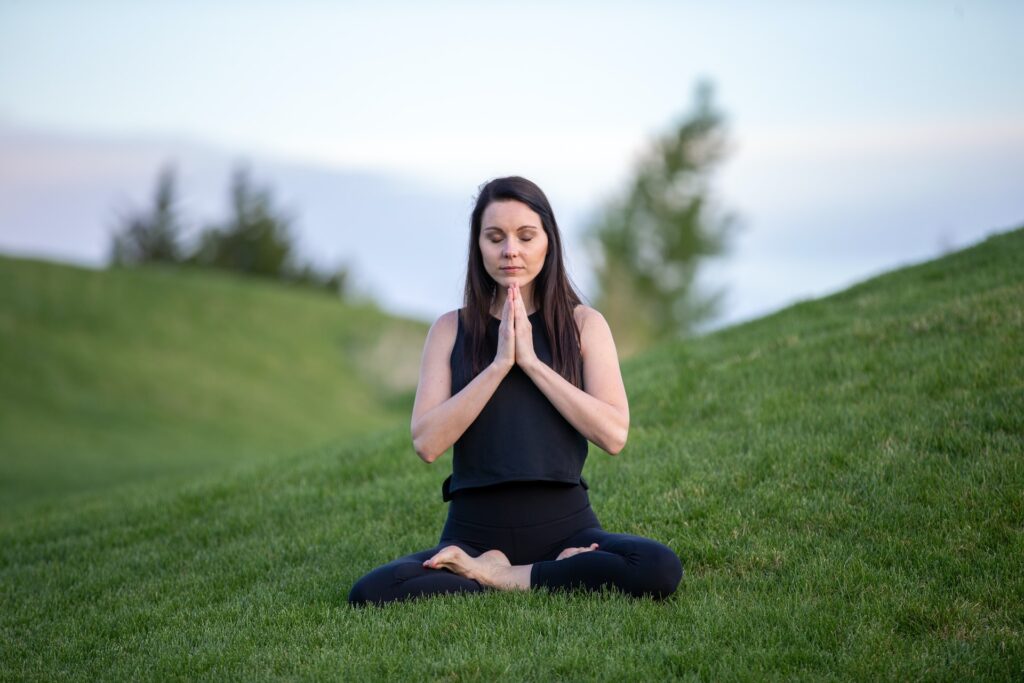In today’s fast-paced and often chaotic world, finding moments of peace and clarity can be a challenge. This is where mindfulness comes in.
Mindfulness is the practice of intentionally bringing one’s attention to the present moment, without judgment or attachment to thoughts or emotions. It is a powerful tool that can help us cultivate a greater sense of awareness, reduce stress, and enhance overall well-being.
Here, we will explore the concept of mindfulness, its benefits, popular mindfulness exercises, the history of mindfulness, and the core components of mindfulness.

Table of Contents
What is Mindfulness?
Mindfulness can be defined as “awareness that arises through paying attention, on purpose, in the present moment, and non-judgmentally”. It involves intentionally directing our attention to the present moment, observing our thoughts, feelings, and sensations without judgment, and accepting them as they are.
Mindfulness is about being fully engaged in the present moment, rather than being caught up in regrets about the past or worries about the future.
Benefits of Mindfulness
The practice of mindfulness has been shown to have numerous benefits for both mental and physical well-being. Research suggests that regular mindfulness practice can:
- Reduce Stress: Mindfulness helps to reduce stress by promoting relaxation and reducing the activation of the body’s stress response. It allows us to observe our thoughts and emotions without getting caught up in them, leading to a greater sense of calm and equanimity.
- Improve Mental Health: Mindfulness has been found to be effective in reducing symptoms of anxiety, depression, and other mental health conditions. It can help individuals develop a more positive and compassionate relationship with their thoughts and emotions.
- Enhance Cognitive Functioning: Mindfulness practice has been shown to improve attention, concentration, and working memory. It can also enhance creativity and problem-solving skills.
- Promote Emotional Well-being: By cultivating present-moment awareness, mindfulness allows us to respond to our emotions in a more skillful and compassionate way. It helps us develop a greater sense of emotional resilience and regulation.
- Improve Physical Health: Mindfulness has been linked to various physical health benefits, such as reduced blood pressure, improved sleep quality, and enhanced immune function. It can also help individuals make healthier lifestyle choices, such as eating mindfully and engaging in regular physical activity.

Mindfulness Exercises
Practicing mindfulness does not have to be complicated or time-consuming. There are many simple exercises that can be incorporated into daily life to cultivate present-moment awareness. Here are some of the best mindfulness exercises:
- Mindful Breathing: Find a quiet place to sit comfortably and focus your attention on your breath. Notice the sensation of the breath as it enters and leaves your body. Whenever your mind wanders, gently bring your attention back to the breath.
- Body Scan: Lie down or sit in a comfortable position and bring your attention to different parts of your body, starting from the top of your head and moving down to your toes. Notice any sensations or areas of tension without judgment.
- Mindful Eating: Take a moment to fully engage your senses while eating. Notice the colors, smells, textures, and flavors of your food. Chew slowly and savor each bite, paying attention to the sensations in your mouth.
- Walking Meditation: Take a walk in nature or any quiet area and focus your attention on the physical sensations of walking. Notice the movement of your body, the feeling of your feet touching the ground, and the sounds and sights around you.
- Loving-Kindness Meditation: Sit comfortably and silently repeat phrases of loving-kindness towards yourself and others. For example, “May I be happy, may I be healthy, may I live with ease.” Extend these wishes to loved ones, acquaintances, and even difficult people in your life.
Mindfulness Meditation
Mindfulness meditation is a formal practice that involves setting aside dedicated time for cultivating present-moment awareness. It typically involves sitting in a comfortable position, closing the eyes, and focusing attention on a specific object of meditation, such as the breath or bodily sensations.
The goal is to observe the mind’s tendency to wander and gently bring it back to the present moment.
What’s the Difference Between Mindfulness and Meditation?
While mindfulness and meditation are often used interchangeably, they are not exactly the same.
Mindfulness is a quality of awareness that can be cultivated through various practices, including meditation. Meditation, on the other hand, refers to a specific technique or practice that aims to cultivate mindfulness.
In other words, mindfulness is the state of being, while meditation is the practice that helps us develop mindfulness.

The History of Mindfulness
Mindfulness has its roots in ancient Eastern traditions, particularly Hinduism and Buddhism. It has been practiced for thousands of years as a means of cultivating wisdom, insight, and inner peace.
The modern popularity of mindfulness can be attributed to the work of Jon Kabat-Zinn, who developed the Mindfulness-Based Stress Reduction (MBSR) program in the late 1970s.
Since then, mindfulness has gained widespread recognition and has been integrated into various fields, including psychology, medicine, education, and business1.
Core Components of Mindfulness
While mindfulness can be practiced in various ways, there are some core components that are essential to its cultivation:
- Intention: Mindfulness involves setting an intention to be present and aware in each moment. It requires a conscious effort to direct attention to the present moment and let go of distractions.
- Attention: Mindfulness requires sustained attention and focus on the present moment experience, whether it be the breath, bodily sensations, or the environment. It involves observing thoughts, emotions, and sensations without getting caught up in them.
- Non-judgment: Mindfulness involves adopting a non-judgmental attitude towards one’s thoughts, emotions, and experiences. It is about accepting things as they are, without labeling them as good or bad.
- Acceptance: Mindfulness involves accepting the present moment experience as it is, without trying to change or resist it. It is about embracing the full range of human experience, including both pleasant and unpleasant sensations.
FAQ
What is the purpose of mindfulness?
Mindfulness aims to cultivate conscious presence, enhance self-awareness, and foster emotional regulation, leading to reduced stress and an increased sense of well-being.
How do I practice mindfulness?
Mindfulness can be practiced through exercises such as body scans, focused breathing, and observing thoughts. Engaging in regular mindfulness meditation is also highly effective.
How can I be more mindful?
Start by dedicating a few minutes each day to mindfulness exercises. Over time, expand these practices to various aspects of your daily routine.
How does mindfulness help relieve anxiety?
Mindfulness interrupts the cycle of anxious thoughts by redirecting attention to the present moment, reducing the grip of future-oriented worries.
Can mindfulness help me break bad habits?
Absolutely. Mindfulness promotes self-awareness, allowing you to recognize triggers and urges, providing a foundation for breaking detrimental patterns.
Can mindfulness help my relationship?
Mindfulness can enhance relationships by improving communication, empathy, and emotional regulation, creating a more harmonious connection with loved ones.
Final Thoughts
Mindfulness is a powerful practice that can help us cultivate present-moment awareness, reduce stress, and enhance overall well-being.
By intentionally directing our attention to the present moment and observing our thoughts and emotions without judgment, we can develop a greater sense of clarity, calm, and compassion. Incorporating mindfulness exercises and meditation into our daily lives can have profound effects on our mental, emotional, and physical health.
Ready to give being mindful a try? Start small, be patient with yourself, and enjoy the journey of cultivating mindfulness.







